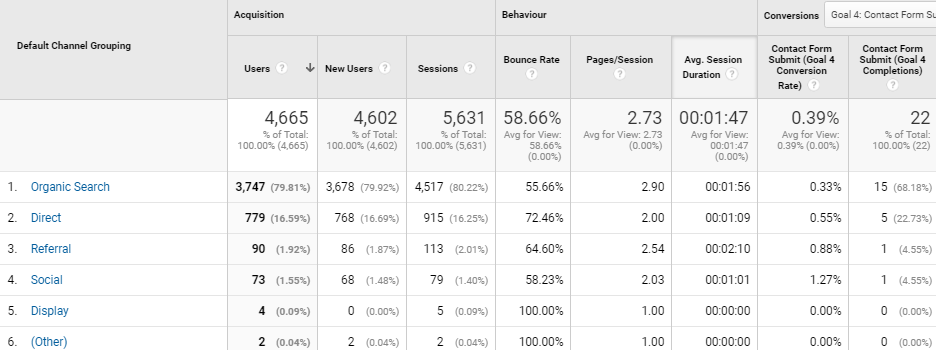While Channel or Custom Dimension might be valid candidates, C has got to be for Conversions – the lifeblood of any business.
A conversion is a key action that’s valuable to your business, like an email sign-up or enquiry form submission or better still, a purchase. If you’ve set up e-commerce tracking, you’ll be able to see conversion data on sales; otherwise, they’ll be based on an action (goal) you define. And if you don’t have conversions defined, how will you know the effectiveness of your ad campaigns or marketing channel/spend?
Google makes a distinction between micro and macro conversions, micros being an activity which tend to move a visitor to a macro conversion like a sale. But for the small business, micro are macro.
So what do you do with your juicy Conversion data? Segment it. Let it answer questions like ‘which channel led to the most enquiries or sales?’ or ‘Did mobile devices convert at a better rate than desktop?’
Tips: Loose the woolly conversion goals like ‘spends 5 minutes or more on the site’. Big deal, maybe they fell asleep. Focus on the actions that’ll move your business forward.
And check your conversions after a site migration or redesign – it’s easy to forget URL-based conversions can get broken.
If it’s an oversight to have the wrong goals, or even none at all, it is a criminal offense (punishable by a spell in HMP Styal-sheet) to have none showing in your Adwords. If you need help, I’ve written a step-by step guide to connecting Analytics with Adwords.
Finally, if you want to set the office alight with a rousing sound when an analytics goal is fired, check this blog post!
To get these A-to-Zs in bite-size form, follow me @AnalyticsAtoZ on Twitter. Or sign-up to get notified when a new one is out or when my forthcoming ‘A-to-Z of Google Analytics’ book is published.
